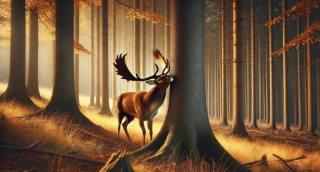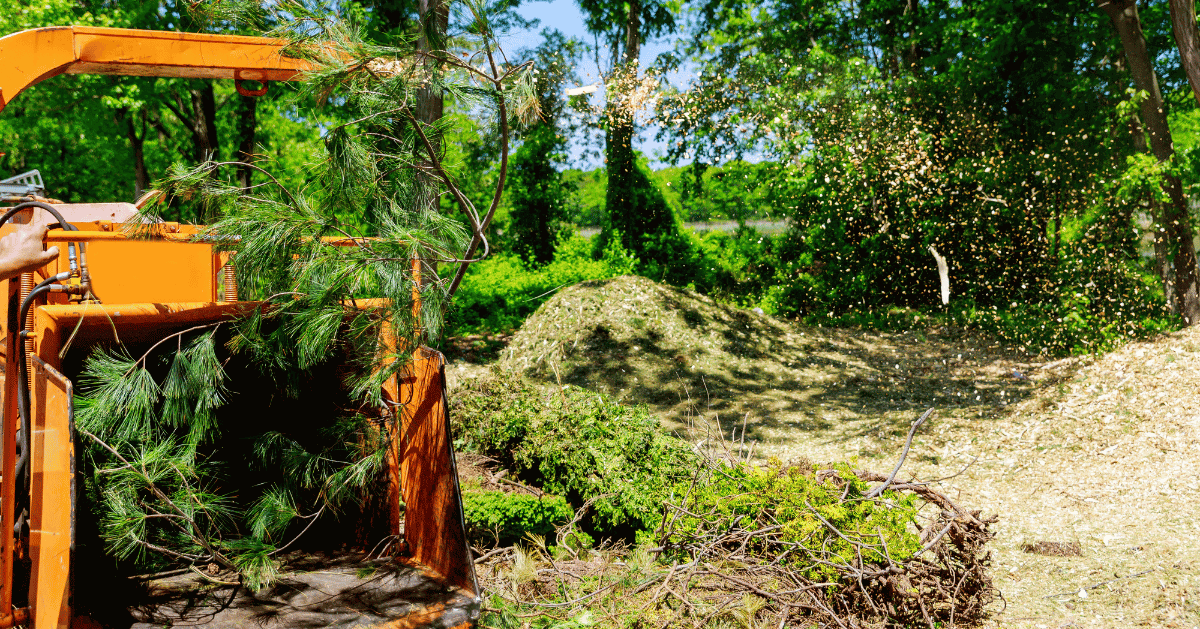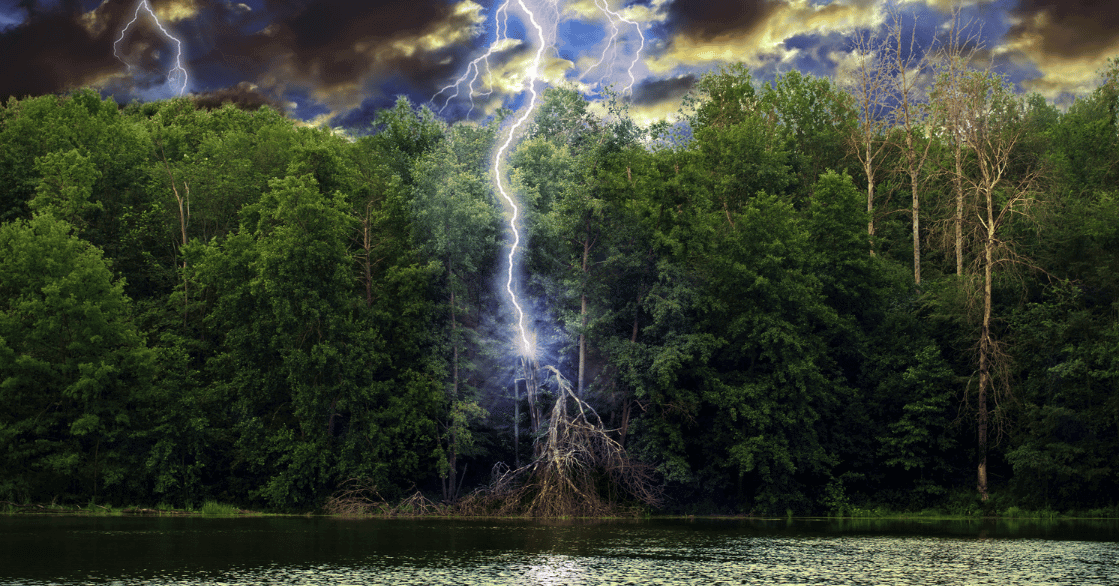Deer rubbing their antlers on trees is a natural behavior that can wreak havoc on your landscape, especially if you've planted young or sensitive trees. You've likely seen the effects if you live in the tri-state you've, where deer are common. Bark stripped from tree trunks, exposing the wood beneath and leaving the tree vulnerable to disease, insects, and other environmental stresses.
In this article, we'll explore what deer rubbing means, how to save a tree after a deer has rubbed it, and how to prevent deer from rubbing their antlers on trees in the first place. Protecting your trees from deer rubs is essential, and at Strobert Tree Services, we offer the expertise and solutions to help you safeguard your trees.
What Does It Mean When a Deer Rubs a Tree?
Deer rubbing occurs when male deer, or bucks, scrape their antlers against trees. This behavior happens mainly during the fall, coinciding with the deer's breeding season, or rut. As bucks prepare for mating, they rub their antlers on trees to mark their territory and strengthen their neck muscles. The rubbing behavior also helps remove the velvet from their antlers, a soft layer of tissue covering them as they grow during the summer.
While deer rubbing is a natural part of a buck's behavior, it can have severe consequences for trees, especially younger ones. The damage often results in removing the tree's bark, which is crucial for nutrient transport. When the bark is stripped, the tree's ability to move water and nutrients between the roots and the leaves is disrupted, which can stunt the tree's growth or, in severe cases, cause it to die.
How to Save a Tree After a Deer Rub
If your tree has already suffered damage from deer rubbing, the first step is to assess the extent of the injury. In some cases, the damage may be superficial, while the tree may have lost a significant portion of its bark in others.
Here to respond if a deer has rubbed your tree:
- Assess the Damage: Examine the tree to determine how much bark has been removed. If more than 50% of the circumference has been stripped, the tree may not survive because the flow of nutrients will be significantly disrupted.
- Clean the Wound: If the damage is less extensive, you can help the tree recover by cleaning the wound. Use a sharp knife to remove any ragged or loose bark from the affected area. Be sure to remove any more healthy bark only if necessary.
- Let Nature Take Its Course: After cleaning the wound, avoid the temptation to use sealants or wound dressings, as these can trap moisture and potentially cause fungal growth. Trees naturally heal themselves, forming callous tissue over time to protect the exposed area.
- Provide Extra Care: Ensure the tree is well-watered and mulched to reduce stress during its recovery. Mulch should be applied around the tree's base, but not directly against the trunk, to help retain moisture and regulate soil temperature.
- Protect the Tree in the Future: If the tree survives, take steps to protect it from further damage (more on this below).
While it is possible to save a tree after it has been rubbed, prevention is the most effective strategy for protecting trees from future deer damage.
How to Prevent a Deer from Rubbing Antlers on Trees
Preventing deer from rubbing their antlers on your trees requires a proactive approach. You can use several methods to keep deer away from your trees, ranging from physical barriers to deterrents. Here are some of the most effective strategies:
- Tree Guards: Installing tree guards is one of the most effective ways to prevent deer rubbing. Tree guards are protective barriers made of plastic, wire mesh, or other materials placed around the tree trunk. These guards prevent deer from getting close enough to the tree to rub their antlers. Be sure to use guards that are tall enough to account for the height of deer, typically 4-5 feet high.
- Fencing: A fence can create a physical barrier to keep deer out of your yard entirely. For the fence to be effective, it must be at least 8 feet high, as deer can jump over shorter fences. Several types of fencing are available, including mesh fencing, electric fencing, and even invisible fencing that uses sound to deter deer.
- Deer Repellents: Applying deer repellents to your trees can help discourage deer from rubbing their antlers on them. These repellents come in both chemical and natural forms. Chemical repellents usually contain ingredients with a strong odor or taste that deer find unpleasant. Natural repellents, such as those made from garlic or hot pepper, can also be effective. However, repellents need to be reapplied regularly, especially after rain.
- Plant Deer-Resistant Trees: Another option is to plant less attractive trees for deer. Deers prefer soft-barked trees like fruit trees, maples, and oaks. Instead, consider planting tougher bark trees, conifers, or ornamental trees like gingko or honey locust. While no tree is entirely deer-proof, choosing species that deer are less likely to target can reduce the likelihood of damage.
- Use Motion-Activated Devices: Motion-activated sprinklers or lights can startle deer and scare them away from your trees. These devices are triggered by movement and spraying water or brightening light when a deer approaches. Over time, deer may learn to avoid the area altogether.
Contact Strobert Tree Services
At Strobert Tree Services, we understand how frustrating it can be to watch your beloved trees suffer from deer rubbing. Whether you need help protecting your trees from future damage or assessing the health of a tree that has already been rubbed, our team of experts is here to help.
We offer free health assessments for your trees, where we can evaluate the extent of the damage and provide recommendations for treatment and protection. From installing tree guards to suggesting the best deer-resistant trees for your property, we have the tools and expertise to help you maintain a healthy landscape.
Don't wait until it's too late—reach out to Strobert Tree Services today to learn more about how we can help you protect your trees from deer rubbing and other potential hazards. Your trees are a valuable part of your property, and we're here to ensure they remain healthy and beautiful for years to come.











